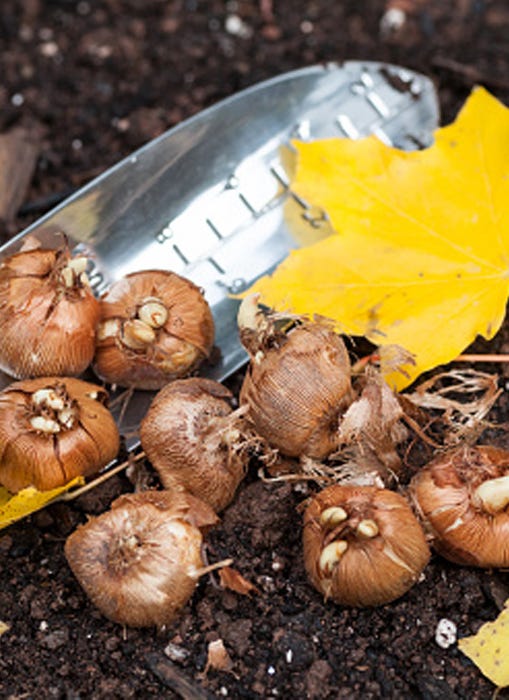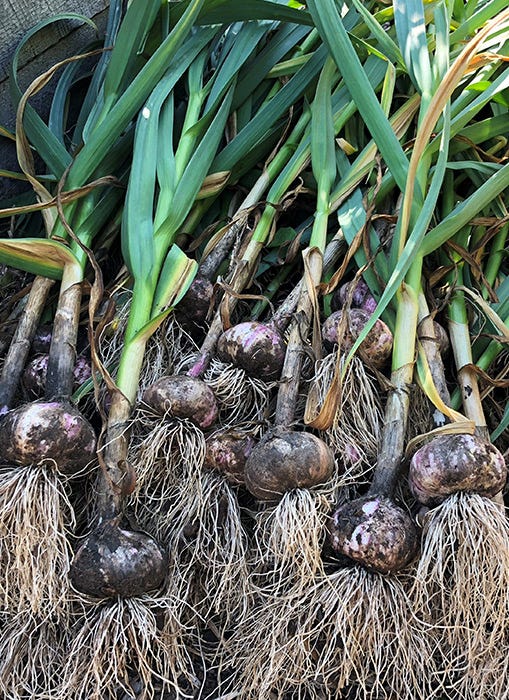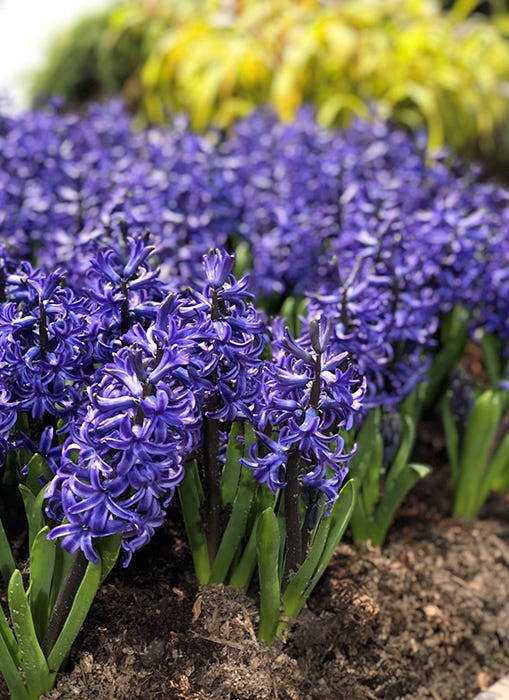Five Autumn Garden Tasks
Pumpkin spice season may have arrived, but don’t hang up your garden gloves just yet. Autumn is a great time to be in the garden and many tasks will also give you a head start on spring.
5 Autumn Garden Tasks
Here are five fall garden jobs to tackle right now:
1 Plant Bulbs
Want a dazzling spring display of bulbs like tulips, crocus, daffodils, and alliums? Grab your trowel as these bulbs are planted in fall so they have time to set roots before the ground freezes.
Most types of bulbs prefer a site with full sun and well-drained soil. However, there are bulbs, like glory-of-the-snow and snowdrops that thrive in partial shade. It’s a good idea do a bit of research to ensure you’re buying the right bulbs for your garden.
Before planting, prep the site by loosening the soil and adding compost. For a natural display, plant bulbs in clumps of at least ten to fifteen, depending on the type of bulb. Large bulbs like alliums can be planted in three’s while smaller bulbs like crocus offer the biggest visual impact when planted in groups of at least twelve.


2 Plant Garlic
It’s not just flower bulbs that are planted in autumn, the biggest garlic bulbs come from cloves planted in October. Hardneck garlic, the most common type grown in Atlantic Canada offers a double harvest; tender scapes in mid June and plump bulbs in late July.
Garlic is easy to grow and bothered by few pests and diseases. Plant in a sunny garden bed that has been amended with compost or aged manure. Break the bulbs into individual cloves and plant each two to three inches deep and six inches apart. Once planted, mulch with three inches of straw or shredded leaves. The mulch offers winter protection and reduces weeds.
The following June, harvest the scapes when they emerge from the center of each plant. Garlic scapes make a delicious pesto. About a month after the scapes, dig the bulbs. If stored in a cool dark spot garlic keeps well for six to nine months.


3 Start a compost pile
Compost is an excellent soil amendment for flower and vegetable gardens, adding organic matter and improving soil texture and moisture retention. And with a bounty of fallen leaves available in autumn, it’s the perfect time to start a backyard compost pile.
You can buy a compost bin or build your own from untreated wood, old pallets, or chicken wire. Fill it with shredded leaves, garden debris, grass clippings, kitchen scraps, coffee grinds, and other organic materials.
To speed up decomposition, turn the pile every two weeks to introduce oxygen. Also keep an eye on the moisture level; it should be damp, but not wet or dry. Expect finished compost in around twelve months.


4 Go easy on the clean up
As the weather cools, many of us are anxious to get the garden tided up as quickly as possible. But, research has shown that leaving flower stalks, plant stems, and leaves in the garden is important for pollinators like native bees and butterflies. Many pollinators overwinter in our gardens but if we remove protective habitats, we risk damaging their populations.
Instead of bagging autumn leaves, use them as mulch on your garlic bed, in a compost bin, or place them around perennials for winter insulation. Leave the stalks of perennials in the garden. Native bees overwinter in their hollow stems, but they also add winter interest. Once the weather begins to warm in spring the insects emerge and you can tidy up any stalks, stems, and leaves that remain in the garden.


5 Give the lawn some TLC
Autumn is also the time to fertilize your grass. Fall fertilizer can be applied in October to build roots and improve lawn health. If your soil is acidic, spread pelletized lime with a broadcast spreader. If your lawn is looking a bit patchy, give it a hard raking to remove any dead grass and apply a high quality lawn seed. Topdress with a light layer of compost and keep the area well watered until the seed has germinated and is growing well.



